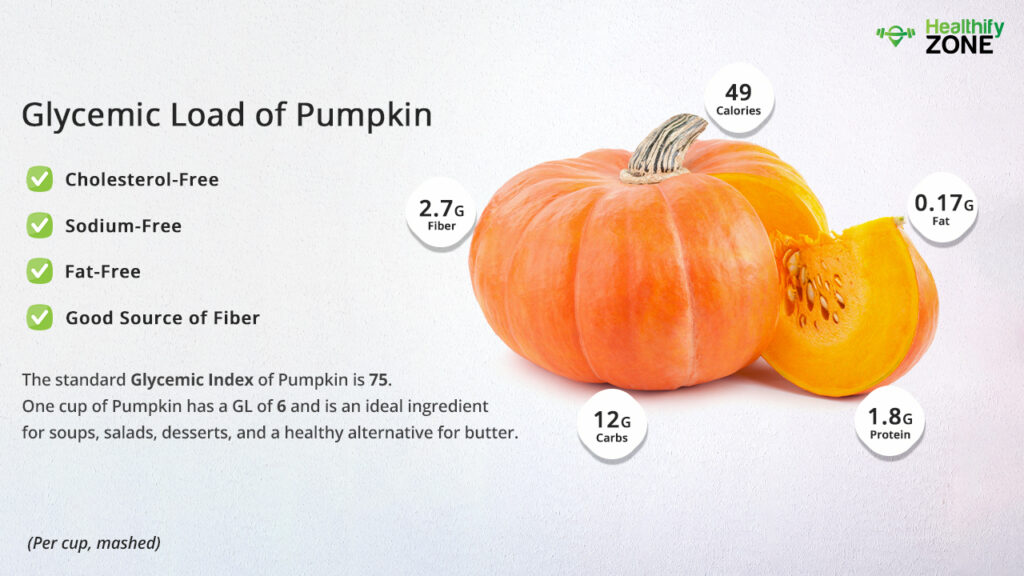The GI of pumpkin is 75; however, the GL is only 3. This means that consuming just one portion of pumpkin should not have a substantial impact on your blood sugar levels. However, consuming a lot of pumpkins could significantly raise your blood sugar levels. Portion control is essential for controlling blood sugar levels when eating foods high in carbohydrates. Pumpkin has little carbohydrates and a lot of fiber in a typical dish. As long as you use portion control, pumpkin, while having a high glycemic index, won’t likely have a substantial impact on your blood sugar levels.
Is Pumpkin Safe for Diabetes?
Controlling blood sugar levels is essential for everyone with diabetes to avoid more serious side effects like vision loss, skin infections, nerve damage, and heart disease. In essence, we’ll examine pumpkin’s significance in controlling blood sugar levels and determine whether it’s a sensible choice for diabetics. Due to its high GI, some individuals might believe that it is dangerous for diabetics, although this is untrue. Due to its low GL ranking, eating a small amount of pumpkin is completely safe and won’t significantly raise your blood sugar levels. However, diabetes patients may experience negative effects if they consume a lot of pumpkins at once.

Is Pumpkin Suitable for Weight Loss?
An excellent vegetable that can do wonders for the diet is pumpkin. Although it has numerous advantages for weight loss, there are just too many other health advantages to overlook. A nice supplement to the diet is pumpkin. Pumpkin has numerous health advantages for the skin in addition to helping you lose weight. Beta-carotene and vitamin A are both abundant in pumpkins. This works as a natural sunscreen and aids in nourishing the skin from the inside out.
What is the Best time to Consume Pumpkin?
A pumpkin is best consumed in the morning or as a snack in between meals. Pumpkins are low in fat, cholesterol, and salt and high in nutrients. They are, therefore, ideal for getting rid of stubborn fat because of this. Additionally, vegetable aids with appetite control, so you won’t find yourself overindulging in junk food.
The Bottom Line: The Glycemic Index of Pumpkin is 75.
Pumpkin is a nutritious food full of ingredients that can help with blood sugar regulation. It may lower blood sugar, which could improve diabetes management and, in certain cases, halt the disease’s progression, according to a number of animal studies. Although consuming pumpkin itself has health benefits, most individuals consume it in the form of less beneficial items like sugary drinks, baked goods, and holiday pies.
Despite the fact that the majority of studies have been carried out on animals, the results indicate that including pumpkin in your diet may help you manage your blood sugar if you have diabetes, provided you eat it in its least packaged form and take pleasure in a typical serving size.